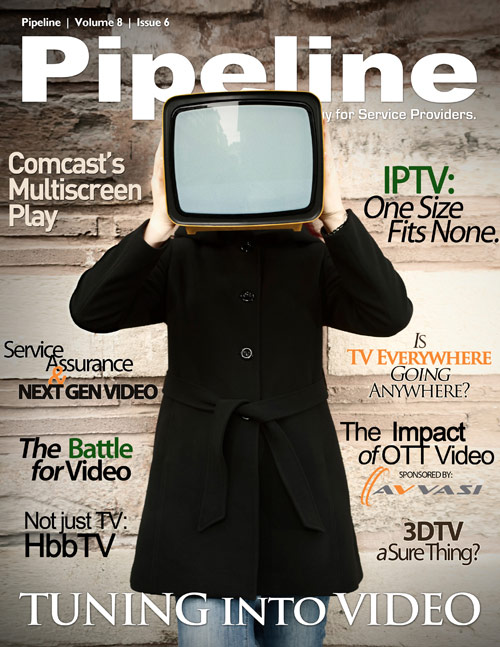By: Melissa Smith

For almost two years, 3DTV has been marketed as the next big thing. Because consumers are spending money in theaters for 3D movies—The Lion King 3D made more than $30 million in its opening weekend alone—developers are pushing to bring the 3D experience into the home through television. But the transition to 3D might not be such a sure bet.
There's certainly more 3D content than ever being produced for television. ESPN plans, starting this month, to shoot 43 NCAA basketball games in 3D. The World Cup is broadcast in 3D. But is having a few, albeit high profile, programs available in 3D enough to get customers to buy expensive sets? And with increased adoption of Anywhere TV and quadruple-screen services, the trend seems to be moving away from viewers sitting around a set in the living room, which 3D requires. And those glasses aren't exactly a fashion statement.
If you are thinking about offering 3DTV programming, it might be smart to wait it out a bit longer. Here’s why:
Bandwidth
Right now, HD channels are in demand—the consumer actually wants this, so why lose up to 6MHz of bandwidth to provide programming that only a limited number of subscribers can enjoy? Depending on the encoding method used, a single 3D channel could use up to two channels that could be put to better use providing HD content.
For providers with bandwidth to spare, this isn't really an issue—but for smaller providers with more constrained bandwidth availability, there isn’t much to spare for something that may or may not be around in five years.
Standards
The kinks are still being worked out of 3DTV standards, so until they are set, there is no guarantee that all 3D programming will work with all technologies.
Telecom tech guru Tal Givoly wrote in his blog about why he thinks 3D technology will not catch on as planned:
“It’s great that HDMI 1.4a is there, but that isn’t enough," Givoly says. "There are still several different ways to broadcast 3D signals. Mind you, none of them are full HD (or even 1080i) for each eye. How the signal is packaged has impact on quality.”
Givoly goes on to say that all 3D technology from the TV to the receiver to the DVD player and everything else can be affected by these conflicting standards, and may not work correctly, or at all.
Also, currently, there are no standards for 3D glasses, though Panasonic, Samsung, Sony and X6D Limited have joined forces to devise a standard for glasses. These glasses will reportedly be available in 2012, and will be compatible with 2011 3D active TVs, according to a press release.
In April 2009, The Society of Motion Picture and Television Engineers (SMPTE) suggested a mastering standard based on 1920 X 1080 pixel resolution at 60 frames per second and per eye, but there are other standards bodies like the Consumer Electronics Association (CEA) and 3D@Home working to create their own standards for 3D technology.
Technology
Leslie Ellis, analyst, expert and author of her own telecom tech blog shared her thoughts on the expense of producing 3D television programming. 3D cameras are still expensive and Ellis adds that converting existing content, if done correctly, can cost up to $125,000 per minute, and doing it wrong can produce a dizzying, sub par viewing experience.
Expensive for Consumers
In 2009, millions of Americans bought new televisions because of the Digital TV transition and Americans aren't likely to be ready to invest in new sets anytime soon.
SNL Kagan reports that only about 1.8 million homes in the United States, or only about 2 percent, are expected to own a 3DTV by the end of 2011. While these numbers are expected to grow with an expected penetration rate of 21 percent by 2015, right now, they seem stalled.
3D televisions are expensive, running from about $400 for a refurbished set to around $8,000 for a brand new set, not to mention the cost of fitting an entire family with 3D glasses, which, depending on the type of glasses, could cost up to $180 for one pair.
Still, in both the United States and in Europe, Samsung, Sony, Panasonic and LG dominate the 3D market, with Samsung leading the market with almost 50 percent in both Europe and North America.
Now, add a 3D-capable DVD player, surround sound, and other various accessories—it's going to cost a pretty penny to get the real 3D theater experience at home.








